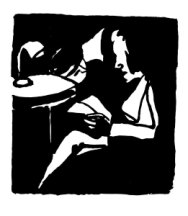Definition – Suprematism
Suprematism was an art movement which focused on geometric shapes, for example circles, squares, lines, and rectangles. They were painted in a limited range of colours. The movement was founded by Kazimir Malevich in Russia, in 1915. The term equates to art based on the ‘supremacy of pure feeling or perception in the pictorial arts’ rather than on a visual depiction of objects.
The aim was for the art of Suprematism to be superior to all previous art forms. It was one of earliest forms of abstract art. Malevich came to be fascinated by the search for art’s barest essentials. It was a radical and experimental project that was later to be attacked by the Communist authorities.
The aims was for abstraction to come from a search for the ‘zero degree’ of painting, the point beyond which the medium could not go without ceasing to be art.
Four Key Artists
Kasimir Malevich – Malevich was the founder of the Suprematism movement. In 1915, he fired up the concept of Suprematism by publishing his manifesto ‘From Cubism to Suprematism’. During that year and the next he and other Suprematist artists worked in a peasant/artisan co-operative in Skoptsi and Verbovka village. He exhibited more of his artwork after that. He viewed the Russian Revolution as having paved the way for a new society in which materialism would eventually lead to spiritual freedom.
Ivan Puni – Puni worked with Malevich and other Suprematists. In 1915-1916 Puni, together with other artists, worked at Verbovka Village Folk Centre.
Kesniya Boguslavskaya – Boguslavskaya was married to Ivan Puni (above). She was mainly a poet and interior decorator, but associated herself with the Suprematists. She also worked in the Verbrovka Village Folk Centre with the other Suprematists. This painting below was actually by her husband, but features Boguslavskaya.
Lyubov Popova –Popova had a Suprematist phase in her long career and spent some time with fellow like-minded souls at the Verbrovka Village Folk Centre. To Popova, the canvas surface became an energy field for overlapping and intersecting angular planes in a constant state of release of energy. At the same time the elements were held in a balanced and proportioned whole. Colour was used as the focus with the strong primary colour at the center drawing the shapes together.
One Key Work
I have chosen Malevich’s ‘Black Square’ as a key work as it has been seen as a major landmark in the history of abstract art. Malevich painted four versions of it between 1915 and the early 1930s. Apparently the last version was carried behind his coffin at his funeral. This is the first version of the painting and it depicts a purely black square against a thin border of white. This eliminates any sense of regular space or perspective.
References:
The Artstory Website, http://www.theartstory.org/movement-suprematism.htm [last accessed 20 November 2012]
Wikipedia on Suprematism, http://en.wikipedia.org/wiki/Suprematism [last accessed 20 November 2012]
Wikipedia on Kesniya Boguslavskaya, http://en.wikipedia.org/wiki/Kseniya_Boguslavskaya [last accessed 20 November 2012]
The Heritage Museum, http://www.hermitagemuseum.org/html_En/04/b2003/hm4_1_30.html [last accessed 20 November 2012]
Artcyclopedia, http://www.artcyclopedia.com/artists/popova_liubov.html [last accessed 20 November 2012]





